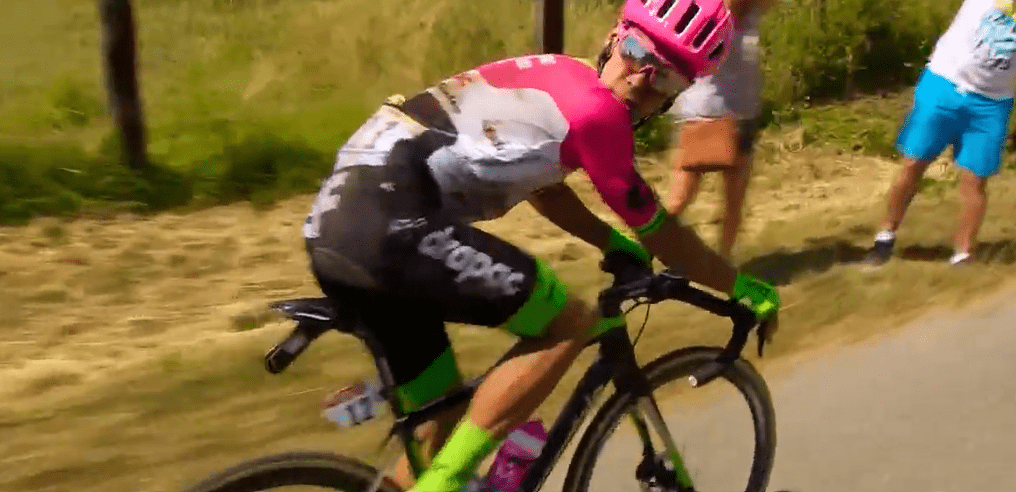Although Albert Bourlon never intended to be a representation of tenacity, the course that life took him was especially instructive. He was born shortly before the end of World War I and was imprisoned during World War II. But he did more than just survive battle; he literally turned hardship into momentum. During the war, Bourlon was captured by the enemy and famously fled to Romania. Instead of fading into obscurity, he showed a level of mental toughness that would later define his career by winning the 1944 Bucharest-Ploesti-Bucharest cycling race.
Europe was still recovering from both visible and invisible wounds by 1947, when the Tour de France resumed following the war. Not only were athletes like Bourlon competing for medals, but they were also competing to reshape the future. Bourlon’s stage 14 ride from Carcassonne to Luchon stood out as an act of inspired defiance during a time when the continent was learning to hope again. Shortly after taking the stage, he separated from the group and rode 253 kilometers alone, which is still the longest solo ride in the history of the Tour de France after the war.
That was not just a daring ride. It worked remarkably well as a post-war recovery symbol. Although he wasn’t the most accomplished or powerful rider of his era, he was untouchable that day. He separated himself from fear, tradition, and the peloton’s tightening leash with each pedal push. Bourlon’s move was unplanned, instinctive, and entirely human, in contrast to the carefully thought-out attacks of today that are directed by team radios and data analytics.
Albert Bourlon – Bio and Career Summary
| Detail | Information |
|---|---|
| Full Name | Albert Bourlon |
| Date of Birth | 23 November 1916 |
| Place of Birth | Sancergues, France |
| Date of Death | 16 October 2013 |
| Place of Death | Bourges, France |
| Discipline | Road Cycling |
| Role | Rider |
| Major Victories | Tour de France 1947 (Stage 14), Paris–Bourges 1947 |
| Tour de France Record | Longest solo breakaway post-war: 253 km (1947) |
| Notable War Experience | Captured during WWII, escaped to Romania, won Bucharest race |
| Velodrome Dedication | Velodrome in Bourges named after him |
| Reference Link | https://en.wikipedia.org/wiki/Albert_Bourlon |

His accomplishment is eerily reminiscent of instances in sports where determination changes the rules. The idea that only strategy wins races was disproved by Bourlon’s ride, much like Jesse Owens silenced a hostile crowd in Berlin or Billie Jean King overtook Bobby Riggs. It’s spirit sometimes.
He demonstrated something especially novel with his performance: an athlete can transcend the sport with one memorable act. For anyone who has ever felt alone in their pursuit but persisted, the lonesome aspect of his breakaway provided a striking metaphor. That’s probably what gave his story its lasting impact more than any trophy.
He humiliated the ostensibly stronger riders behind him as his lead grew minute by minute during that fourteenth stage, defying expectations. Others would have been easily broken by the heat, the terrain, and the isolation. But Bourlon’s resolve remained unwavering. He rode as though clarity came from the quiet. He was fleeing not only the peloton but also all the narratives that had attempted to characterize him.
With every turn of the crank, Bourlon subtly incorporated personal significance into a public performance, paying tribute to his late father and the tenacity of the war effort. That day’s emotional undertones provided cycling with a unique instance of poetic authenticity. Bourlon’s victory felt refreshingly clean—pure in its intent and execution—in a sport that is frequently dominated by controversy or commercial interest.
His achievement has remained a standard over time, but not because it has been replicated—it hasn’t. Even riders with a reputation for long-range attacks, like Thomas De Gendt, and solo experts, like Jens Voigt, hardly ever go more than 200 kilometers by themselves. In terms of legacy and distance, Bourlon went farther. During contemporary Tours, his name is sometimes mentioned in commentary, particularly on demanding stages that challenge riders to go far. However, no one has really accomplished what he did.
Interest in Bourlon’s legacy has grown recently, particularly as the Tour aims to emphasize tales of bravery over fame. For cycling enthusiasts looking for more complex narratives—stories that relate to survival, identity, and resistance in addition to sport—this rediscovery has been especially helpful. In contrast to swift TikTok wins, Bourlon’s victory demands tolerance and deference.
He experienced an almost spiritual connection by riding by himself for hours under the open sky. And he succeeded where most would fail by strategically conserving energy and not doubting himself. Although it’s easy to romanticize such accomplishments, Bourlon’s psychological warfare was extremely effective. He not only physically but also mentally broke the chase.
The death of Albert Bourlon in 2013 signaled the end of a period but also the beginning of a new appreciation. He is still remembered as a legend in both local and national sport, and the velodrome in Bourges is now named after him. Bourlon offers a model—one based on heart, not hype—for medium-sized French towns looking for enduring heroes.
Athletes of all stripes, from ultracyclists to marathon runners, look to Bourlon’s renowned break for motivation today. His story is similar to that of others who, at the age of 64, swam from Cuba to Florida, overcoming extraordinary odds. These are life lessons about perseverance, risk-taking, and clarity, not just athletic achievements.
Bourlon used his inner strength and recollection of years of war to create a story that endures today, unaltered and untouchable. His position in the world of heroism is uncontested. He didn’t simply win by riding. Then he pedaled into legend.

